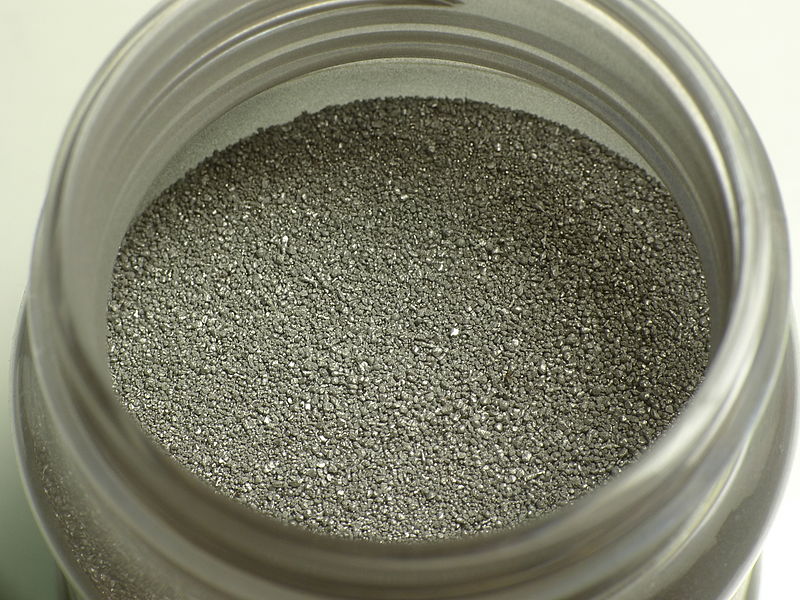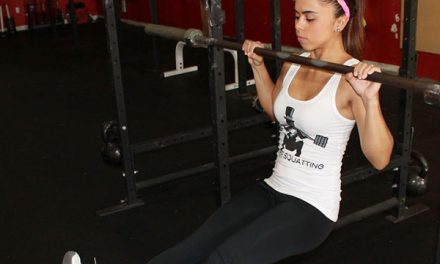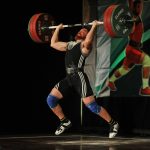Sports supplementation is one of the most inquired topics with regards to strength and performance; ironically, despite the fact that it’s so heavily discussed, it persists in being inundated with misinformation. The misinformation and sometimes, complete lies are due in part to individuals desperately seeking that magic potion which will give them steroid like gains, while supplement companies are more than willing to prey on their ignorance and sell them products with false promises. The unfortunate truth is that there are no legal, safe supplements that are going to drastically enhance your performance and strength, nor will they cause large increases in lean body mass. However, I want to be clear in that I am by no means saying that all supplementation is useless, nor am I saying that there are no supplements that “work”. This depends on a couple of things:
1. Does this product have a proven purported mechanism of action and does this mechanism of action lead to significant real-world results?
2. Is the individual a candidate for supplementation of this product? i.e. do they have a particular deficiency or does their particular goal or activity benefit from the product (assuming the purported mechanism is sound)?
With that stated, let’s jump into the few supplements that are proven to be efficacious and safe and attribute an overall level of rating based upon the body of evidence, as well as the cost-effectiveness.
WHEY PROTEIN POWDER
This recommendation being at the top of the list shouldn’t come as a surprise, considering how ubiquitous it is; almost every strength athlete, and most athletes in general have utilized a protein powder, especially whey protein, at some point in their training careers. This is for good reason; whey protein is a convenient way to increase your daily protein intake, helping to achieve your protein needs. That being said, it’s almost a misnomer to label whey protein powder as a “supplement”, as it is simply a food. It would make as much sense to label chicken breast as a “supplement”. That aside, it proves to be an incredibly high-quality protein source upon examination of its amino acid profile; it contains a very high proportion of EAAs, particularly BCAAs per ~30g serving; going slightly further, it contains a high proportion of the BCAA, leucine, which is said to be most responsible for the increases in muscle protein synthesis (mPS) associated with protein ingestion. By no means is this a necessity, but it does make sense for strength athletes to utilize due to its convenience, amino acid profile and decent taste. Additionally, it’s cost effective relative to other commonly consumed protein sources. You’re looking at approximately $1 per 30g serving depending upon the brand.
GRADE: A
What to buy: You don’t need to spend a ton of money on protein, they’re all pretty much exactly the same. If all you’re looking for is a whey supplement, just go with Optimum Nutrition. It ranks very high on Labdoor (A-) and comes in a ton of flavors. The 5lb tub is the probably one of the best deals you’ll find since it contains over 70 servings which brings it to just over $10/pound.
CREATINE MONOHYDRATE
Creatine monohydrate has a very large body of scientific research and literature behind it and its efficacy has been well substantiated. Creatine monohydrate essentially works by increasing creatine phosphate stores, thereby serving as a phosphate donor within the ATP-PCr energy system. In other terms, creatine increases energy production and power during very intense, short term physical activity, such as weightlifting, sprinting etc. The mechanism of action is sound, and the research does indicate that this translates to real-world results. Additionally, it’s proven to be very safe. With regard to its cost-effectiveness, it’s one of the cheapest supplements on the market. Ideal candidates for this product would be individuals engaged in strength sports or very short-distance, anaerobic events. Dosing protocol is simple: If you wish to saturate creatine stores more quickly, then a loading phase is ideal. Consume four 5g doses, spread throughout the day for the first five days. After the loading phase, consume 5g daily as a maintenance dose. The loading phase isn’t critical, rather it allows for results to be seen in a shorter time frame. If you opt not to engage in the loading phase, simply consume 5g per day. On a side note, there are a plethora of unnecessary, new forms of creatine that cost substantially more than creatine monohydrate; avoid all of these other forms of creatine. They aren’t nearly as researched as creatine monohydrate and they cost way more. That being said, creatine mono is cheap, effective and safe for strength athletes.
GRADE: A
What to buy: Creatine monohydrate is very cheap to make. Don’t be fooled into buying some fancy creatine because it’s not any more effective than standard monohydrate powder. You can get a kilo from Bulk Supplements for just under $20 and it’ll pretty much last forever, not to mention a #1 rank on Labdoor.
BRANCHED CHAIN AMINO ACIDS (BCAAs)
The BCAAs, which are comprised of leucine, isoleucine and valine, are a subgroup of the essential amino acids (EAAs). The EAAs cannot be synthesized endogenously and therefore, we are required to consume them through various dietary protein sources (such as the previously discussed, whey protein). As mentioned prior, whey protein (and many other “complete” protein sources) contain a high, intrinsic amount of BCAAs, so why supplement with isolated BCAAs separately? Well, you don’t really need to and of the supplements discussed thus far, BCAAs are far more reliant upon whether the individual is a candidate for its use. The advantage to BCAAs versus that of a whole protein source, such as whey, is that BCAAs carry substantially less calories per serving; therefore, allowing an individual to increase mPS with as minimal caloric weight as possible. A 10g/~40kcal serving of BCAAs will typically afford as much leucine as a 30g/~120kcal serving. Therefore, BCAAs might be indicated for those that train in a fasted state. Additionally, individuals who are protein deficient, that is their dietary protein intake falls short of their daily needs or those that consume a vegan diet, may benefit from an isolated BCAA supplement. That being said, the research is not definitive that BCAAs, intrinsically offer any unique benefit compared to simply consuming ample, high quality protein sources. The cost factor is high for BCAA supplements, which does not appear to be justified in terms of unique efficacy, according to the current body of research. In summation, BCAAs are relatively expensive, and are only possibly beneficial to a select candidacy.
GRADE: C+
CAFFEINE
Caffeine is one of the few legal, relatively safe supplements that offer an immediate effect. Caffeine is typically the main ingredient in your over-priced pre-workout supplement that gives you an immediate benefit. Caffeine has the unique ability to fit comfortably in your adenosine receptors (A1 receptors). The key here is that caffeine does not activate those receptors like adenosine does and therefore, blocks the activity of adenosine at the receptor site. This allows for dopamine and glutamate to do their work as natural CNS stimulants. A plethora of studies have been done to elucidate caffeine as an ergogenic aid, and it appears to be effective for both endurance athletes, as well as strength athletes. Additionally, coffee is an incredible substance, of which I attribute a great deal of my productivity to. That being said, caffeine is best used sparingly, i.e., very difficult training sessions, combatting poor sleep, 1 rep max testing; once a tolerance to caffeine is built, it’s benefit as an ergogenic aid diminishes. Caffeine is also unique in that its excessive consumption will lead to what’s known as an “insurmountable” tolerance. Larger gram amount dosages, typically will not produce any greater effect once a tolerance is assumed. That being said, caffeine is very cheap, highly accessible in various forms, well-tolerated by healthy individuals and proven to confer an ergogenic benefit, particularly when utilized sparingly and strategically. It is certainly not a make or break supplement, but coffee is fantastic.
GRADE: B+
WHAT ABOUT THIS…? (B-Alanine, HMB etc)
Most of these supplements do not have a large enough body of convincing research. That is not to say that there isn’t some evidence, such as with B-alanine. However, the demographic that may actually benefit from B-alanine would most likely be an endurance athlete, rather than the strength athlete, which it’s marketed towards. The research is not indicative of B-alanine supplementation translating to real-world increases in power output, strength output, hypertrophy etc, despite the fact that its mechanism of action is sound (it does indeed raise muscle carnosine levels effectively). There’s no reason to go in depth with regards to the efficacy of HMB, or lack thereof. For healthy, resistance-trained individuals, there appears to be no benefit to HMB. The only candidates for HMB supplementation shown through research, would be those who are severely over-trained (boot camp etc.), those with certain degenerative, muscular illness, or perhaps those with age-related sarcopenia. The cost factor of these supplements is high and the benefit simply has not been observed definitively. Therefore, they cannot be recommended in good confidence. Even the supplements that were featured, are by no means necessary to make ample progress, but they may be beneficial given the individuals circumstance.
Written by: Peter Ferrandi
References
Artioli, G. G., Gualano, B., Smith, A., Stout, J., & Lancha, J., Antonio Herbert. (2010). Role of beta-alanine supplementation on muscle carnosine and exercise performance. Medicine and Science in Sports and Exercise, 42(6), 1162.
Astorino TA, Rohmann RL, Firth K (2008). Effect of caffeine ingestion on one-repetition maximum muscular strength . Eur J Appl Physiol.
Atherton, P., Smith, K., Etheridge, T., Rankin, D., & Rennie, M. (2010). Distinct anabolic signalling responses to amino acids in C2C12 skeletal muscle cells. Amino Acids, 38(5), 1533-1539. doi:10.1007/s00726-009-0377-x
Bell DG, McLellan TM (2003). Effect of repeated caffeine ingestion on repeated exhaustive exercise endurance . Med Sci Sports Exerc.
Biolo G, Tipton KD, Klein S, and Wolfe RR. (1997). An abundant supply of amino acids enhances the metabolic effect of exercise on muscle protein. Am J Physiol 273(Pt 1): E122–E129.
Davis JK, Green JM (2009). Caffeine and anaerobic performance: ergogenic value and mechanisms of action . Sports Med.
Duncan MJ, Oxford SW (2011). The effect of caffeine ingestion on mood state and bench press performance to failure . J Strength Cond Res.
Flakoll, P., Sharp, R., Baier, S., Levenhagen, D., Carr, C., & Nissen, S. (2004). Effect of β-hydroxy-β-methylbutyrate, arginine, and lysine supplementation on strength, functionality, body composition, and protein metabolism in elderly women. Nutrition, 20(5), 445-451. doi:10.1016/j.nut.2004.01.009
Fujita, S., Dreyer, H. C., Drummond, M. J., Glynn, E. L., Cadenas, J. G., Yoshizawa, F.. . Rasmussen, B. B. (2007). Nutrient signalling in the regulation of human muscle protein synthesis. The Journal of Physiology, 582(2), 813-823. doi:10.1113/jphysiol.2007.134593
Gallagher, P. M., Carrithers, J. A., Godard, M. P., Schulze, K. E., & Trappe, S. W. (2000). Beta-hydroxy-beta-methylbutyrate ingestion, part I: Effects on strength and fat free mass. Medicine and Science in Sports and Exercise, 32(12), 2109.
Hartman, J., Tang, J., Wilkinson, S., Tarnopolsky, M., Lawrence, R., Fullerton, A., & Phillips, S. (2007). Consumption of fat-free fluid milk after resistance exercise promotes greater lean mass accretion than does consumption of soy or carbohydrate in young, novice, male weightlifters. American Journal of Clinical Nutrition, 86(2), 373-381.
Kendrick, I. P., Harris, R. C., Kim, H. J., Kim, C. K., Dang, V. H., Lam, T. Q.. . Wise, J. A. (2008). The effects of 10 weeks of resistance training combined with β-alanine supplementation on whole body strength, force production, muscular endurance and body composition. Amino Acids, 34(4), 547-554. doi:10.1007/s00726-007-0008-3
Lemon P.W. (1998) Effects of exercise on dietary protein requirements. Int J Sport Nutr. Dec;8(4):426-47.
Norton, L., & Layman, D. (2006). Leucine regulates translation initiation of protein synthesis in skeletal muscle after exercise. Journal of Nutrition, 136(2), 533S-537S.
Park, B., Henning, P. C., Grant, S. C., Lee, W. J., Lee, S., Arjmandi, B. H., & Kim, J. (2013). HMB attenuates muscle loss during sustained energy deficit induced by calorie restriction and endurance exercise. Metabolism: Clinical and Experimental, 62(12), 1718-1729. doi:10.1016/j.metabol.2013.06.005
Pennings B, Boirie Y, Senden JM, Gijsen AP, Kuipers H, and van Loon LJ. (2011). Whey protein stimulates postprandial muscle protein accretion more effectively than do casein and casein hydrolysate in older men. Am J Clin Nutr 93: 997–1005.
Volek J.S., Kraemer W.J., Bush J.A., Boetes M., Incledon T., Clark K.L., Lynch J.M. (1997b) Creatine supplementation enhances muscular performance during high-intensity resistance exercise. Journal of the American Dietetic Association 97, 765-770









